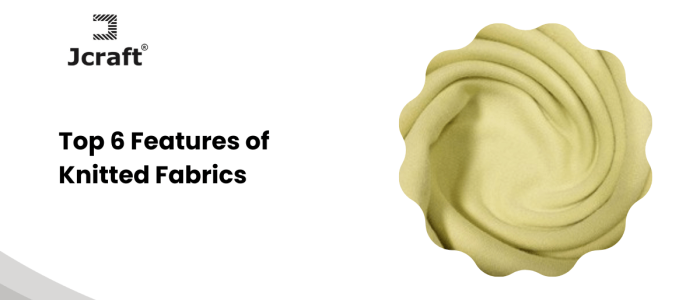Top 6 Features of Knitted Fabrics

Knitted fabrics, a marvel of textile engineering, possess a world of distinctive characteristics that set them apart in the realm of fashion and textiles. From their remarkable stretchability to their inherent resistance to wrinkles and tears, knitted fabrics offer a plethora of advantages that both fashion enthusiasts and industry professionals find captivating. In this insightful journey, we'll unravel the fascinating features of knitted fabrics, shedding light on their flexibility, softness, and more. Join us as we unravel the secrets behind these textiles and discover the endless possibilities they offer in the world of fashion and beyond.
Features of Knitted Fabrics
Stretchability
Knitted fabrics, particularly weft knits, exhibit remarkable stretchability combined with partial elastic rebound. This residual deformation, which can be mostly eliminated through agitation like washing and tumble drying, enhances comfort during bodily movements and grants wearers greater freedom. However, this stretchability can pose challenges during garment cutting and sewing, potentially leading to sagging at areas like the knees and elbows.
Wrinkle and Tear Resistance
Knitted fabrics boast impressive resistance to wrinkles, thanks to their looped structure. When folded or bent, these loops function as reversible hinges at the fabric's edges. Additionally, their high tear resistance is attributed to the loops evenly distributing stress throughout the fabric due to their extensibility.
Limpness
Limpness, the opposite of stiffness, characterizes both warp and weft knits, contributing to their soft and graceful drape.
Softness
The fabric's tactile quality is linked to its stiffness or flexural rigidity. Knitted fabrics, with their lower flexural rigidity compared to fabrics of similar weight, possess a notably soft texture.
Fullness
The fullness or hand of knitted fabrics depends on the bending modulus of their knitted structure. Bending modulus is directly related to flexural rigidity and inversely related to the cube of fabric thickness. Weft knits, due to their low flexural rigidity and greater thickness, exhibit a fuller feel compared to woven fabrics and even warp knits. Additionally, the low twist of the yarns contributes to the overall softness and fullness of knitted fabrics.
Air Permeability
Knitted fabrics are significantly more air-permeable than woven counterparts. This property arises from the inherent airspace created within the fabric structure through loop interlacement. Such air permeability is particularly advantageous for underwear, ensuring that garments in close contact with the skin allow for breathability and comfort.
In conclusion, choosing to buy knitted fabrics from JcraftEco is not just a purchase; it's a conscious decision to embrace quality, sustainability, and innovation. Our commitment to crafting textiles that align with your needs while minimizing our environmental footprint is at the heart of what we do. With a vast array of knitted fabrics that boast exceptional characteristics, from stretchability and tear resistance to softness and fullness, you'll find the perfect materials for your creative projects.
